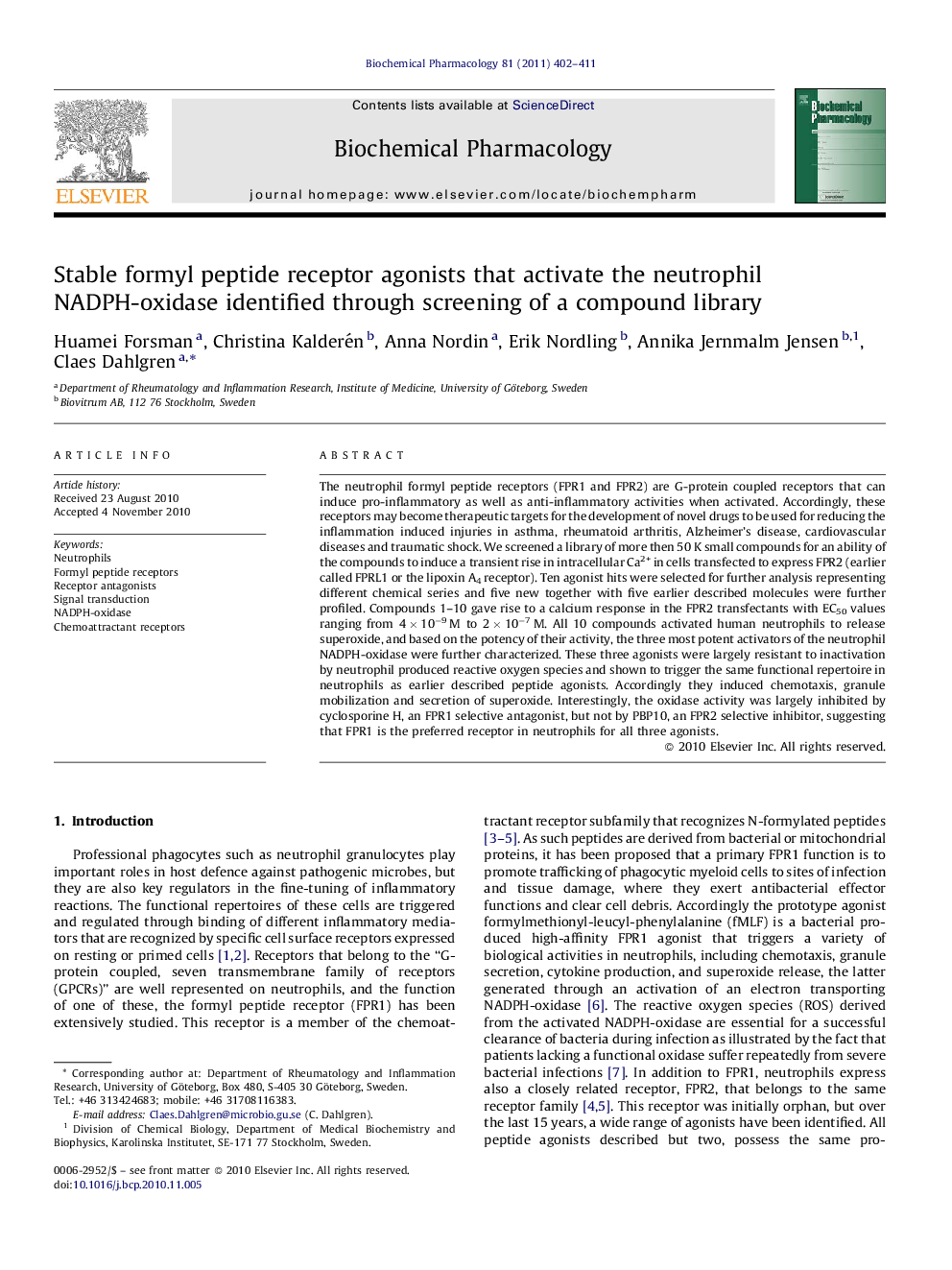| کد مقاله | کد نشریه | سال انتشار | مقاله انگلیسی | نسخه تمام متن |
|---|---|---|---|---|
| 2513173 | 1118398 | 2011 | 10 صفحه PDF | دانلود رایگان |

The neutrophil formyl peptide receptors (FPR1 and FPR2) are G-protein coupled receptors that can induce pro-inflammatory as well as anti-inflammatory activities when activated. Accordingly, these receptors may become therapeutic targets for the development of novel drugs to be used for reducing the inflammation induced injuries in asthma, rheumatoid arthritis, Alzheimer's disease, cardiovascular diseases and traumatic shock. We screened a library of more then 50 K small compounds for an ability of the compounds to induce a transient rise in intracellular Ca2+ in cells transfected to express FPR2 (earlier called FPRL1 or the lipoxin A4 receptor). Ten agonist hits were selected for further analysis representing different chemical series and five new together with five earlier described molecules were further profiled. Compounds 1–10 gave rise to a calcium response in the FPR2 transfectants with EC50 values ranging from 4 × 10−9 M to 2 × 10−7 M. All 10 compounds activated human neutrophils to release superoxide, and based on the potency of their activity, the three most potent activators of the neutrophil NADPH-oxidase were further characterized. These three agonists were largely resistant to inactivation by neutrophil produced reactive oxygen species and shown to trigger the same functional repertoire in neutrophils as earlier described peptide agonists. Accordingly they induced chemotaxis, granule mobilization and secretion of superoxide. Interestingly, the oxidase activity was largely inhibited by cyclosporine H, an FPR1 selective antagonist, but not by PBP10, an FPR2 selective inhibitor, suggesting that FPR1 is the preferred receptor in neutrophils for all three agonists.
Figure optionsDownload as PowerPoint slide
Journal: Biochemical Pharmacology - Volume 81, Issue 3, 1 February 2011, Pages 402–411